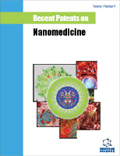
Abstract
Lipid-Drug Conjugate (LDC) is an emerging field of nanotechnology which has potential applications in delivery of drugs and targeting them to specific site. Several molecules were supposed as promising and good therapeutic candidates during in vitro studies but they failed during in vivo studies showing the limited oral bioavailability as a major dilemma. LDC technological based approach played a vital role in augmenting bioavailability of such drug candidates. In LDC system, lipids such as fatty acids, diglycerieds, triglycerides and phophoglycerides covalently bind with drug molecule for improved lipophilic character of drug. This could lead to better penetration and absorption through biological membrane which ultimately enhances the bioavailability of the corresponding therapeutic agent. Drugs including phenytoin, beta lactum antibiotics, noscapine, valproic acid, non-steroidal anti-inflammatory drugs (ibuprofen) were successfully linked through covalent bond by different lipid carriers which improved their physicochemical properties, intestinal absorption and target specificity. This chapter extensively reviewed the lipidic and glycolipidic conjugates of various drugs which enhanced the bioavailability compared to free drug solution exploring that such LCD technique can be used for the enhancement of bioavailability of poorly aqueous soluble drugs. The chapter included several patents with informative results which would help for pharmaceutical scientist working this area.
Keywords: Conjugation, hydrophilic drugs, lipids, lipid-drug conjugate (LDC), oral bioavailability, pharmaceutical application.
 65
65



